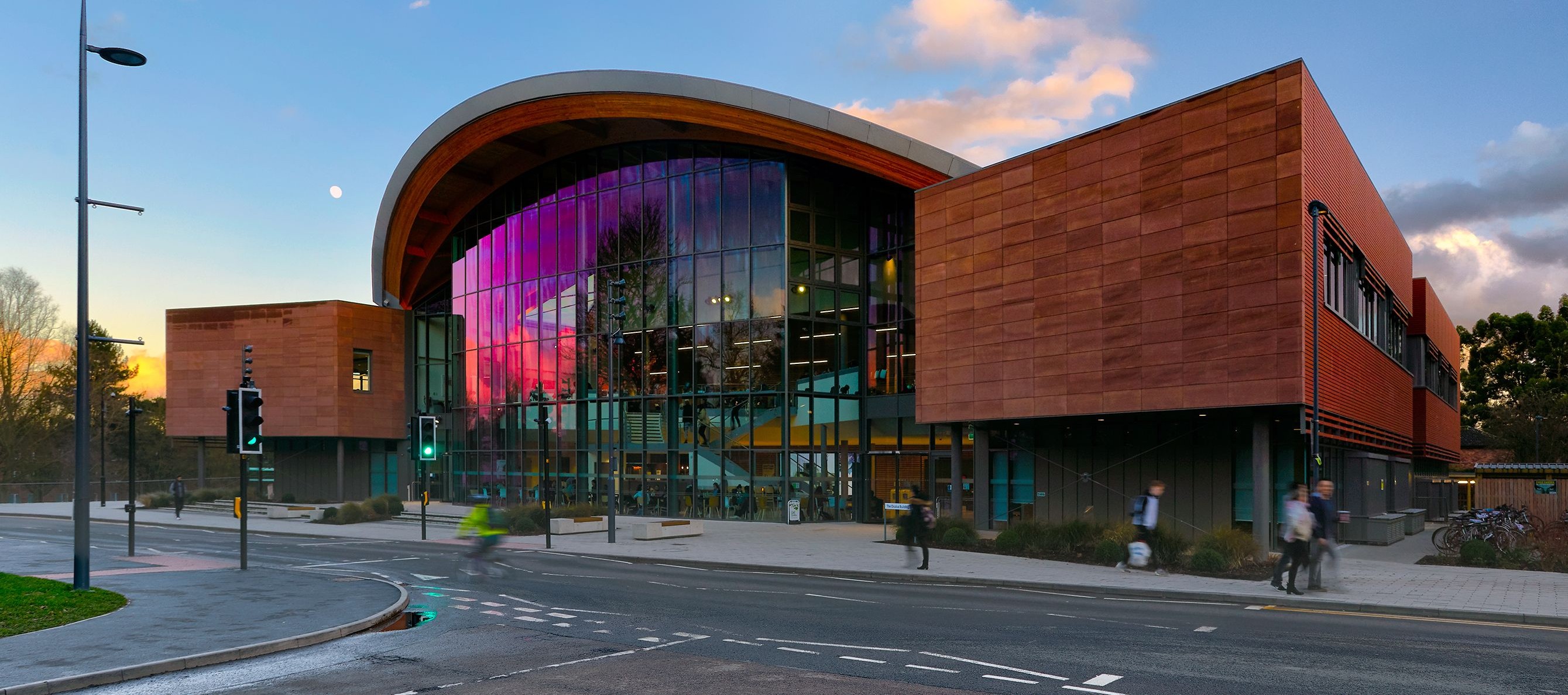The Koan and other stories: University architecture’s effect on creativity
“I would like my architecture to inspire people to use their own resources, to move into the future,” says architect Tadao Ando, who obviously had no contribution towards the design of Warwick’s Humanities building.
For most courses, a solid work ethic and a continuous dose of creativity are vital in term 3, and it is undeniable that a clean, fresh working environment aids these two things; after all, there is method behind the madness of cramming ourselves into the battery-farm-style silent areas of the library instead of working from our student bedroom/bomb-site/mug-hoarding museum, or whatever you want to call the room with your bed in it. But, in all honesty, apart from the world-renowned ‘Warwick Koan’, the architecture around campus is probably just about as inspiring as the Blu Tack marks on your bedroom wall. With exceptions, of course (shout out to Warwick Business School and the Oculus).
It is undeniable that a clean, fresh working environment aids a solid work ethic and a continuous dose of creativity
Let’s begin with the main culprit – the Humanities building: a murky grey block containing five floors of prison cell-style offices which double up as seminar rooms. The real irony lies in the fact that the students spending the most time in Humanities are often those on creative courses – English Literature, Liberal Arts, languages. Ali Smith was inspired to write Booker Prize nominated novel, How To Be Both, by the architecture of the Palazzo Schifanoia Ferrara, its Hall of the Months, and the artwork within in. John Piper wouldn’t have painted some of his most beautiful pieces without the inspiration of the buildings he witnessed. Yet here we are, staring at the same peeling poster in different rooms trying to produce essays not tainted by the dulling aura which surrounds Humanities.
Granted, it is not wholly the external architecture of university facilities which we can blame, or give credit to, for our level of creativity. I’ll use Millburn House as an example. Unless you study creative writing, theatre, or film, this may be a location you are yet to hear of. Nestled between central campus and Westwood, Millburn House appears from the outside to be, well, just a little house amongst the ever-growing number of engineering buildings and 5+ story car parks. Its exterior is plain, apart from a sculpture at its front door; so how is this home to arguably the most creative courses at Warwick? Perhaps the question answers itself, for it is a home. Fairy lights, polka-dot sofas and the occasional poet-tree ooze creativity from the building’s core. Millburn House proves that mediocre architecture can be brought to life by those who inhabit it. I only wish the same could be said for the likes of buildings such as the library; a couple of exercise bikes underneath desks and a tunnel haven’t quite disguised the unimaginative block-of-flat-esque exterior, somehow.
Millburn House proves that mediocre architecture can be brought to life by those who inhabit it
However, credit where it’s due – things are on the up for university architecture. I can’t name a soul who wouldn’t happily have the Oculus as their holiday home. With its contemporary design and bright, comfortable learning spaces, the young building is a breeding ground for creativity and productive studying. Likewise, the recent completion of the brand spanking new National Automotive Innovation Centre has brought a touch of sophistication to campus’ image; although, really, how many more WMG buildings do they need? There are some hidden gems, too. Warwick’s Mechanochemical Cell Biology Building extension is immaculate to peer at.
Furthermore, the promise of a new Faculty of Arts which shall replace Humanities (hoorah) means future course companions can have high hopes for an inspiring work environment. Who knows, maybe it could even give the Warwick Koan a run for its title as the greatest piece of architecture to dwell upon Warwick’s campus.

Comments